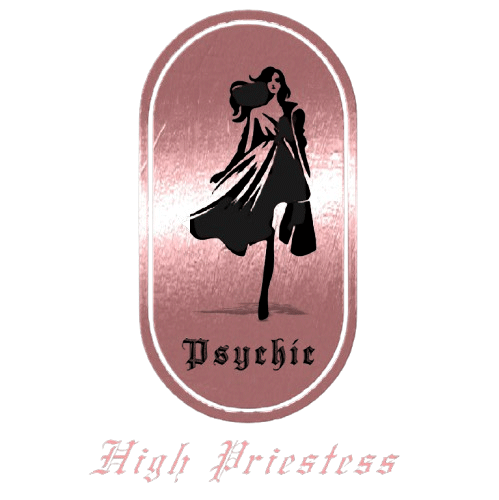In today’s fast-paced world, stress and anxiety have become a part of daily life for many. We often find ourselves stuck in cycles of overthinking, restlessness, and emotional exhaustion. While modern medicine has made incredible advances in treating physical ailments, emotional and spiritual imbalances are not always so easily addressed. This is where spiritual healing comes in—a practice that taps into the deeper, unseen layers of our being to promote peace, balance, and true inner transformation.
What Is Spiritual Healing?
Spiritual healing is a holistic approach to well-being that focuses on aligning your mind, body, and spirit. Unlike traditional medicine, which often treats symptoms, spiritual healing seeks to address the root causes of emotional, mental, and sometimes even physical pain.
It is not tied to any one religion or belief system. Rather, it works through the idea that each person has an energetic or spiritual core that can be disrupted by stress, trauma, or negative thoughts. When these energetic blocks are cleared, a person can experience profound clarity, peace, and even physical relief.
Some people experience this healing through prayer, meditation, or energy work, while others find it in nature, art, or acts of compassion. No matter the method, the goal is the same: to reconnect with the inner self and restore harmony.
The Need for Spiritual Healing in Modern Times
It’s easy to lose touch with ourselves when we’re constantly plugged into devices, managing responsibilities, and dealing with the pressure to always be “on.” Many people report feeling emotionally drained even when their physical health seems fine. This is where spiritual healing offers a much-needed reset.
Here are a few common signs that you may benefit from spiritual healing:
- You feel stuck or lost in life
- You’re constantly anxious or overwhelmed
- You have trouble sleeping or relaxing
- You feel emotionally heavy without knowing why
- You’re seeking a deeper sense of purpose or connection
If any of these resonate with you, spiritual healing might be the missing piece in your wellness journey.
Techniques for Spiritual Healing
There is no one-size-fits-all method for spiritual healing. Everyone’s path is unique. That said, here are some widely practiced techniques that can help you achieve inner peace.
1. Meditation and Mindfulness
Meditation is one of the most accessible and powerful tools for spiritual healing. It involves sitting quietly, focusing on your breath, and observing your thoughts without judgment. Over time, this practice helps you become more aware of your mental patterns and creates space between you and your thoughts. Mindfulness, a form of meditation, is about being fully present in the moment. Whether you’re eating, walking, or simply breathing, doing it mindfully can help you ground yourself and reduce mental clutter.
Start with 5 minutes of deep breathing in a quiet space. Inhale for 4 counts, hold for 4, exhale for 4, and repeat. With practice, gradually extend your meditation time.
2. Energy Healing (Reiki, Chakra Balancing)
Many spiritual traditions believe that the body has an energy system, and when this energy is blocked, illness or emotional unrest can occur. Energy healing techniques, like Reiki or chakra balancing, work to restore the natural flow of energy.
- Reiki involves a practitioner placing their hands lightly on or just above the body to channel healing energy.
- Chakra balancing focuses on aligning the body’s seven main energy centers. Each chakra is associated with certain emotions and physical states.
Energy healing is a gentle but deeply transformative experience for many people. Even if you’re skeptical, the act of setting aside time for yourself in a peaceful setting can be healing on its own.
3. Journaling and Self-Reflection
Sometimes, spiritual healing starts by simply listening to yourself. Journaling is a powerful way to access your inner world and uncover what might be blocking your peace. Writing your thoughts freely can help you process emotions and identify patterns that are holding you back. This form of reflection often leads to revelations that feel like an emotional release or breakthrough.
4. Spending Time in Nature
Nature has an undeniable calming effect on the human spirit. Walking in the forest, sitting by a river, or simply lying under the sky can restore a sense of connection that modern life often strips away. It helps us slow down, breathe, and remember that we are part of something much larger than our worries. This practice of reconnecting with the Earth is sometimes called “grounding” or “earthing.” Taking off your shoes and walking barefoot on grass or soil is believed to help you discharge built-up stress and rebalance your energy.
5. Sound and Music Healing
Sound has been used for centuries as a healing tool. From ancient chanting to modern sound baths, different frequencies can affect our mental and emotional states. Listening to calming music, especially nature sounds, binaural beats, or singing bowls, can help you relax deeply and shift your energy. These sounds work by slowing down your brain waves, encouraging a meditative or healing state. You don’t need fancy equipment—just a quiet space and a pair of headphones.
6. Spiritual Counseling or Guidance
Sometimes we need someone to help us understand our spiritual path. Spiritual counselors, shamans, or even trusted mentors can provide insights, tools, and guidance as you navigate your healing journey. These sessions can involve talk therapy, meditation, intuitive readings, or personalized rituals depending on your comfort level and beliefs. The key is finding someone who resonates with you and honors your individual path.
Benefits of Spiritual Healing
While the experience of spiritual healing varies for each person, many report:
- Reduced anxiety and emotional stress
- Improved clarity and focus
- A sense of deep inner calm
- Better relationships with self and others
- Stronger connection to life’s purpose or spiritual beliefs
Over time, spiritual healing can lead to lasting changes. It doesn’t “fix” your life overnight but helps you respond to it from a place of centeredness and compassion.
Spiritual Healing and Self-Empowerment
One of the most beautiful aspects of spiritual healing is that it empowers you. You learn to listen to your intuition, trust your journey, and take responsibility for your emotional and spiritual health. Rather than looking outside for all the answers, you begin to look within. This shift from victimhood to empowerment is transformative. Even in difficult times, you start to see challenges as opportunities for growth rather than signs of failure.
Getting Started on Your Spiritual Healing Journey
If you’re ready to begin your own journey, start small and be kind to yourself. You don’t need to change everything at once. Even a few minutes of quiet reflection or a walk in nature can set things in motion.
Here are some simple first steps:
- Set aside 10–15 minutes a day for spiritual self-care
- Try guided meditations on YouTube or meditation apps
- Begin a gratitude or self-reflection journal
- Explore different techniques and see what resonates with you
Remember, there’s no “right” way to heal spiritually. The best approach is the one that feels authentic and supportive for you.
Final Thoughts
The power of spiritual healing lies not in magic or mystery, but in the quiet, consistent commitment to knowing yourself on a deeper level. In a world that often pulls us in a thousand directions, spiritual healing brings us back home—to peace, to balance, and to the truth of who we really are. Whether you are new to this path or have been exploring it for a while, the journey of healing is a lifelong one.





